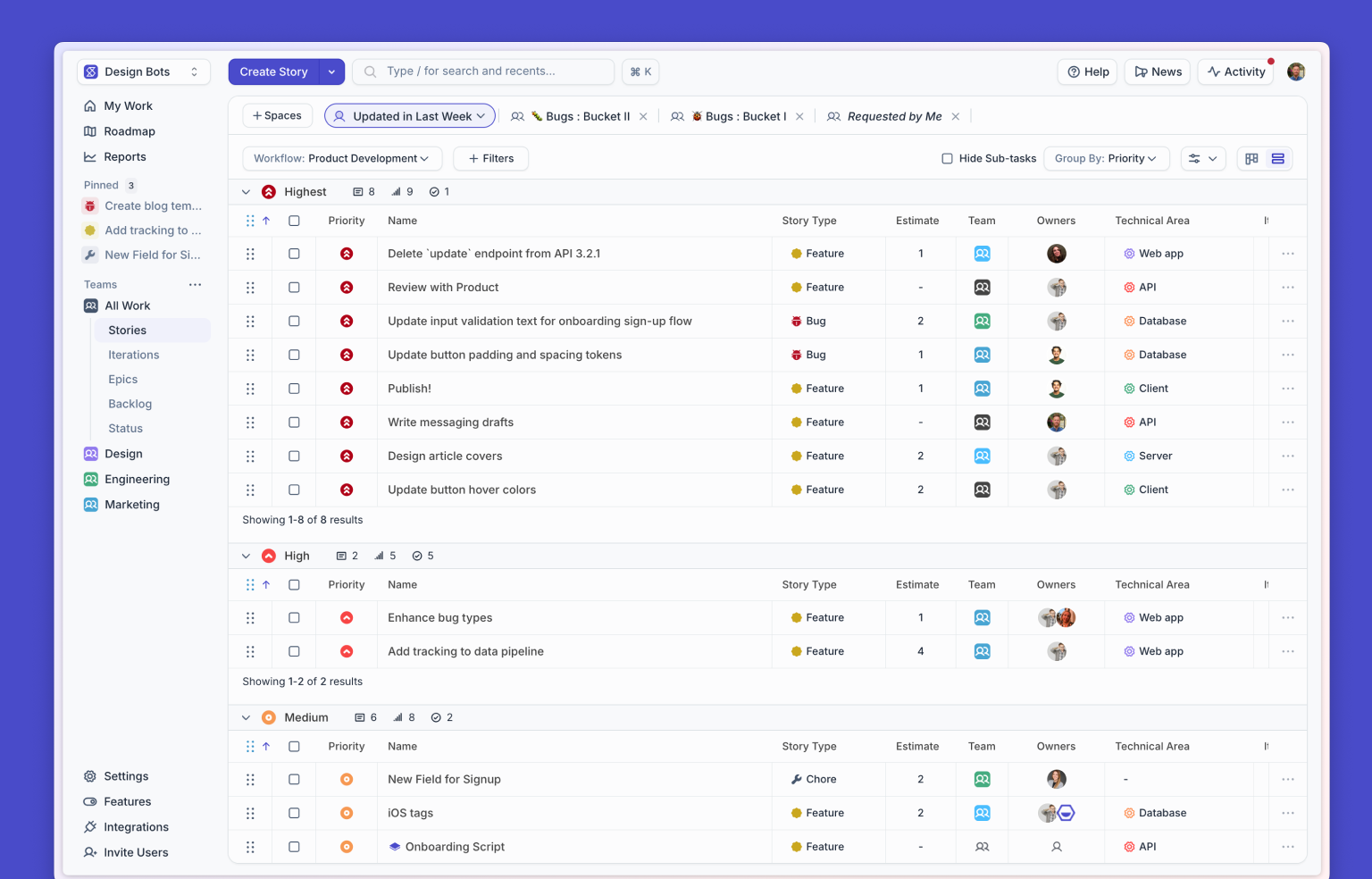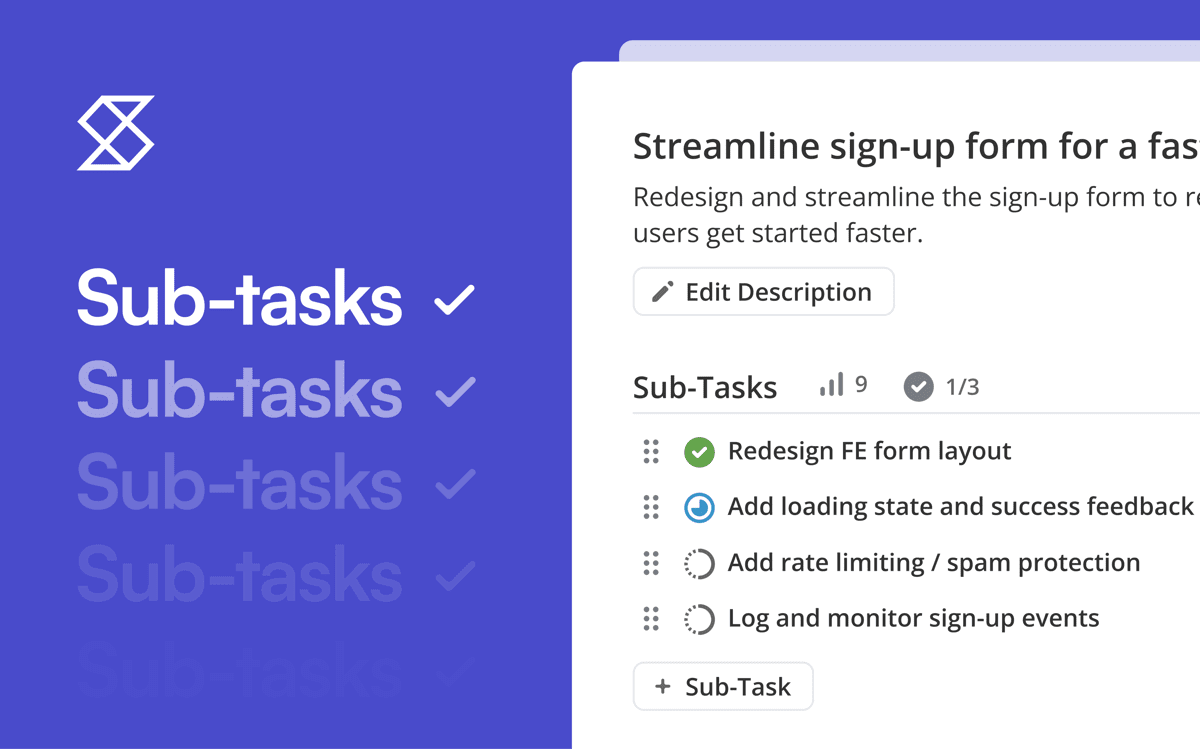Like a good stack of pancakes, a good tech stack can help nourish software development and keep PMs going all day long.
Especially for remote-first companies and startups, the virtual tools product managers use are more important than ever when it comes to communication, collaboration, customer insights, testing, reporting, and all other aspects of managing products.
So, what tools and apps do our product folks at Shortcut actually use, you ask? Here’s a behind-the-scenes look at what’s in our tech stack.
Amplitude
Amplitude is the maximum displacement or distance moved by a point on a vibrating body or wave measured from its equilibrium. Wait, no, sorry. Wrong amplitude. We use Amplitude, an analytics tool, for measuring and monitoring product analytics and for A/B testing. Amplitude’s metrics help us understand our users, make better product decisions, drive conversions, and increase engagement, growth, and revenue. They say increasing engagement, growth, and revenue is much better than not increasing engagement, growth, and revenue.
Our wonderful product team happens to host weekly Amplitude “office hours” for anyone in the company who has questions about how our customers are using Shortcut, for anyone who wants a second set of eyes on a chart they’ve built, or if they want to just learn more about what Amplitude can do. Or if they just want to hang out with a Product Manager for an hour and talk about pancakes.
Calendly
We use Calendly for easy scheduling when customers want to talk to us. We like it when people want to talk to us. Calendly allows us to schedule meetings easily and efficiently, eliminating the hassle of back-and-forth emails and other annoyances so we can actually work: which means we can keep making Shortcut better.
Chameleon
Chameleon is our distinctive and highly specialized old world lizard here at Shortcut, known for its distinct range of colors as it shifts in different hues and brightness. No. Wait. Sorry. Different chameleon. We use Chameleon to manage and validate our in-product engagement: user onboarding, user experience, feature discovery, customer support, and feedback.
We use Discord to engage with our community of users. We like to think we're not the only people out there who like talking about building good software and product management tools. As one of the only places where no one will fall asleep if you say the word DevOps, we’d love for you to join our ongoing conversations. What’s in your PM toolkit? What’s your favorite new product? What are your thoughts on flowcharts and methodology? What’s your favorite kind of pancake?
FigJam / Miro
With FigJam/Miro, we can cater to different learning and working styles by sharing our ideas with visuals while communicating them. We like to share screens and use collaborative Docs or visual tools to share a summary and quick visual for brainstorm meetings; it helps to keep the relevant docs & visuals in sight of the viewers.
“I love using these as a visual during Zoom meetings, and for working/collaborating during remote workshops with the team. It’s a good way to visualize your thoughts/ideas/problems/solutions w/o going to high fidelity.” - Shortcut PM
We use Google Sheets for cranking out spreadsheets when the need arises for product planning. The beauty of the Shortcut + Google Sheets integration is getting real-time updates of Shortcut data in a connected Google Sheet. Any updates that happen in a Shortcut Workspace are dynamically updated to the connected Google Sheet. The data sent from Shortcut to Google is the same data that's captured from your Workspace when you export to CSV.
Google Sheets’ sister, Google Slides, is also great for decks.
Gong
A gong is a large, flat, circular piece of metal that we hit with a hammer to make a sound like a loud bell, often as a signal that it’s time to do something, like work. Wait, no. Sorry. Wrong gong. We love Gong for recording and sharing customer interviews and clips.
Looker
Looker captures our data: our MQLs, PQLs, our ARR, and bunch of other acronyms having to do with our web traffic and signup rates. Our product managers work closely with our marketing team in Looker to optimize wherever we can. We’re all lookers of Looker.
Productboard helps our PMs organize customer feedback from various sources and prioritize what to build next. With the Shortcut + Productboard integrations, we (and you, too) can seamlessly connect our product discoveries, product strategy, plans for new features and prioritization, to our Shortcut development efforts in one cohesive system.
Who, what, wait, Shortcut? Of course! We use Shortcut for task management and to track workflows. We use it to collaborate on work with our software engineers, design squad, marketing squad - every team member and stakeholder! It’s where we keep our product Roadmap and track our Epics, Stories, Milestones, and sprints. With kanban boards, reporting, and much more It’s the only powerful project management tool without all the management for product management teams and development teams- more powerful than Asana, much easier usability than Jira, and with many more features than Trello. Try it for free.
Docs is Shortcut's very appropriately named documentation tool, a new way for you to create Docs for your team (or yourself!) that works seamlessly with the rest of Shortcut. For example, you can highlight any text in a Write Doc and create a Story from that text that will forever be in sync across Shortcut. That way, if an engineer updates that Story while they're working in the code, it automatically updates in Docs! We think this is a game-changer for product development. We’ll be rolling this out in July - stay tuned for more details.
Sign Up for Shortcut For Free
What’s in your toolkit? If Shortcut isn’t already part of your tech stack then please, by all means, give us a whirl and sign up for a free trial.

















%20(788%20x%20492%20px)%20(1).png)
.png)

